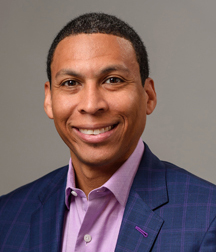
Note: Watch a video of the complete Workforce Roundtable here.
Explore This Issue
ACEP Now: Vol 40 – No 10 – October 2021I recently met with four emergency physicians—Jesse Pines, MD, MBA, FACEP, national director of clinical innovation at US Acute Care Solutions (USACS) and professor of emergency medicine at Drexel University; Viktoria Koskenoja, MD, chair-elect of the Rural Section of ACEP, who practices in the Upper Peninsula of Michigan; James “Jay” B. Mullen III, MD, FACEP, chair of the Democratic Group Practice Section of ACEP, a practicing emergency physician, and CEO of BlueWater Health, which staffs emergency departments and urgent cares throughout New England; and Sudave D. Mendiratta, MD, FACEP, chair and chief of emergency medicine at University of Tennessee/Erlanger, who also serves as the President of the Tennessee Chapter of ACEP—to discuss the recent emergency medicine workforce projections published in Annals of Emergency Medicine.1 Our conversation spanned just under an hour and pondered the implications of the authors’ estimates for the future emergency medicine workforce and what it means for emergency physicians.
After recently sitting with a medical student mentee over coffee, I know concerns about the future of the EM workforce invade the minds of not just the leadership of ACEP but also practicing physicians, residents, and the brilliant young men and women who want to follow in our footsteps.
In this article, I have limited space to summarize a few of the important themes. What will the emergency medicine workforce look like at the end of the decade? According to the report, experts anticipate more then 67,000 total emergency medicine practitioners, of which emergency physicians would make up 70 percent. Physician assistants (PAs) and nurse practitioners (NPs) would assume 23 percent of the workforce, while other non-emergency-trained physicians would comprise the remainder. In 10 years, this workforce would slightly exceed the demand for emergency services, creating a surplus that threatens the future of the specialty. One of the first questions I posed to the members of roundtable was, what should the future of emergency medicine look like?
Advanced Practice Professionals
“If we’re going to define the perfect world, we’re going to want high-value medicine,” started Dr. Mullen, referencing that board-certified emergency physicians represent the pinnacle of training and experience in emergency care, but for low-acuity care, advanced practice professionals (APPs) such as NPs and PAs would remain valuable to the clinical team.
Dr. Koskenoja pushed back a little on this notion, saying that “it’s kind of like the wild wild West out there,” referring to her practice in rural Michigan. Recalling anecdotes of patient harms from inexperienced NPs and PAs, she reported that “patients are being hurt in these scenarios when there’s someone … just basically taking care of someone alone and that’s not a safe environment.”
The team approach is better, both agreed, with the emergency physician in the lead. So did Dr. Mendiratta, who stated that “the appropriate use of APPs should not be determined by economic factors. It should be determined by the needs of our patients.” Thus, the leadership skills of emergency physicians become critical. Whether that leadership occurs in real time at busier emergency departments or is available to consultation in lower-volume sites, Dr. Mendiratta affirmed that “an emergency physician should be the leader of a collaborative care team.”
Unfortunately, in some places, such as rural Maine, that is not always the case. “Financially strapped rural hospitals that are having trouble staffing their emergency department, they may reach out and start having an independent PA or nurse practitioner work there,” said Dr. Mullen. “And that’s just so wrong for the patients but also so wrong for that practitioner because they’re going to be faced with challenges they are not up to, and that can sometimes be career-ending.”
Pages: 1 2 3 4 5 | Single Page






One Response to “Emergency Physicians Explore the Future of the Emergency Medicine Workforce”
October 27, 2021
Concerned ED DocWhile I appreciate the time and effort some of these doctors have put into conversing with the editor, I feel like they are quite out of touch from our major concerns.
NPs and PAs are in not “advanced practice.” They’re mid-level practice at best. Yes it would be great to use them in a team setting but in reality in most EDs around this country the volume and staffing doesnt permit the ED physician from in-time reviewing what they see and do. This leads to the façade of a team dynamic and physician led ED while in reality it just puts our licenses at risk.
The newer EM grads, especially those in the past 1-5 years of residency (not to mention those currently in residency) didn’t get into emergency medicine to do telemedicine. We became EM physicians because we appreciated the complexity, randomness, and high pace (at times) of emergency medicine. We wanted to do procedures while also being able to take care whatever came through the doors.
Yes, I agree we need to recruit and make wanting to work in a rural environment a priority but thats not going to solve the 9,000 additional grad problem in 9 years.
Do something to stop the proliferation of profit driven (ex: HCA) EM residency programs. Stop promoting the usage of NPs and PAs in place of physicians. Create standards that require staffing requirements and in-time supervision of patients with mid-levels. Promote transparency in billing practices in our names. Stop the “full practice authority” that has proliferated the NPs and created a false sense of equivalency with physicians.